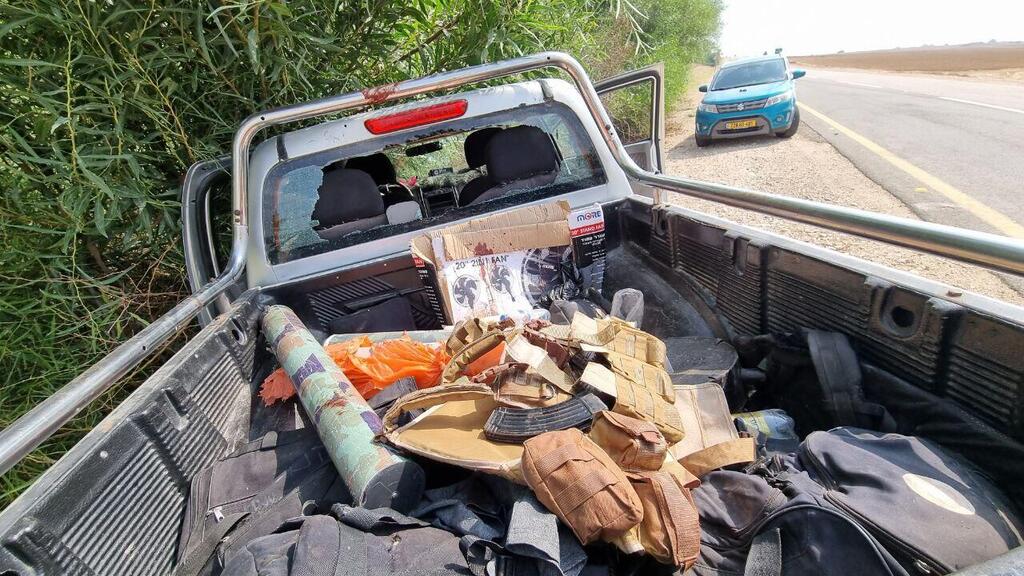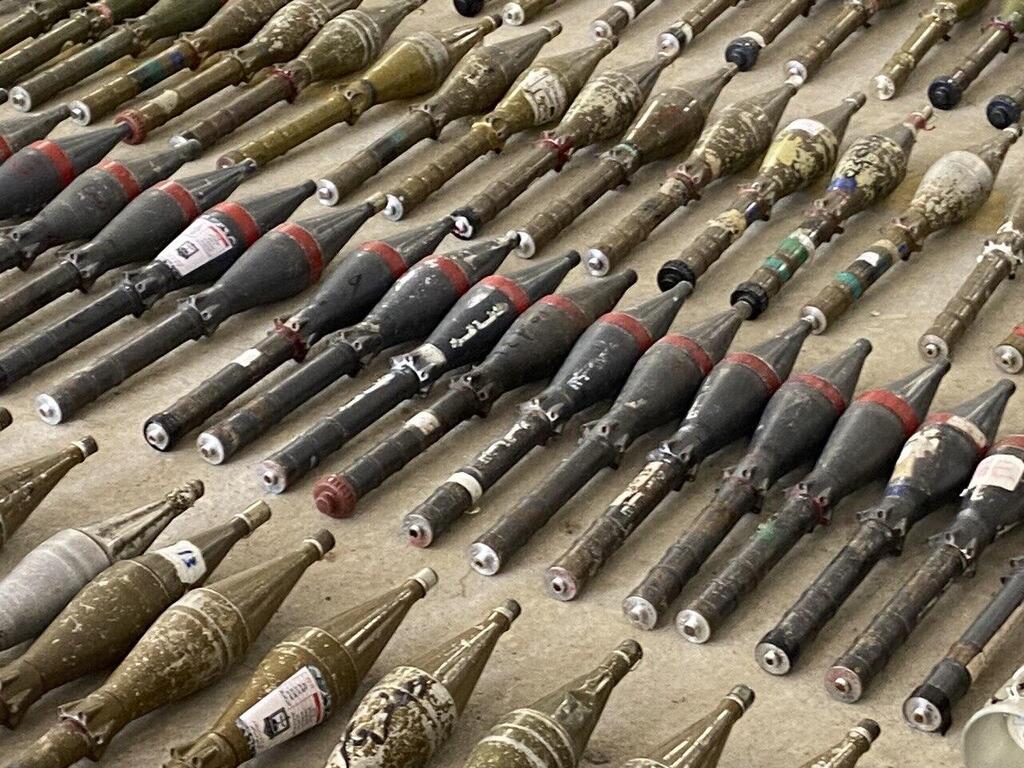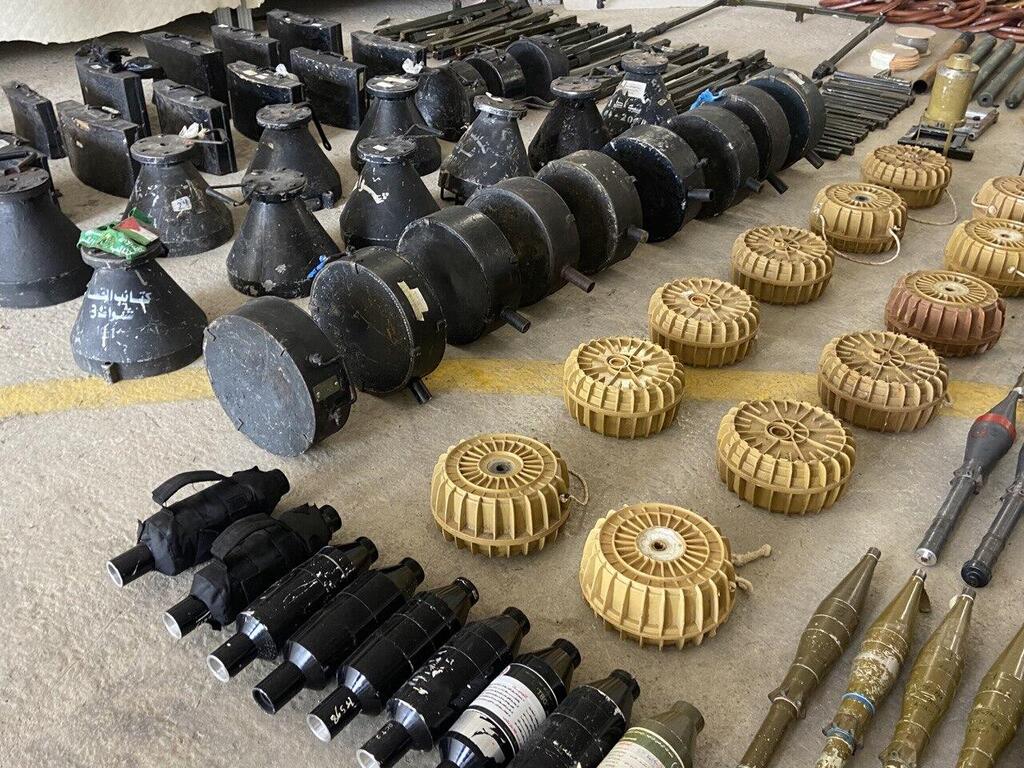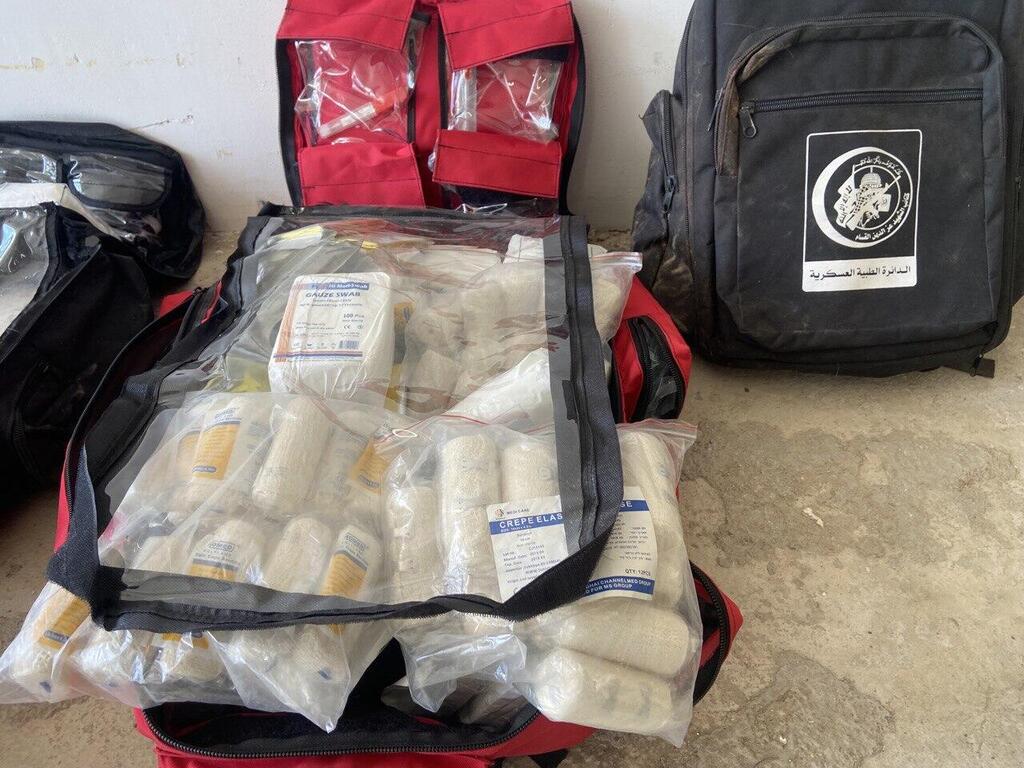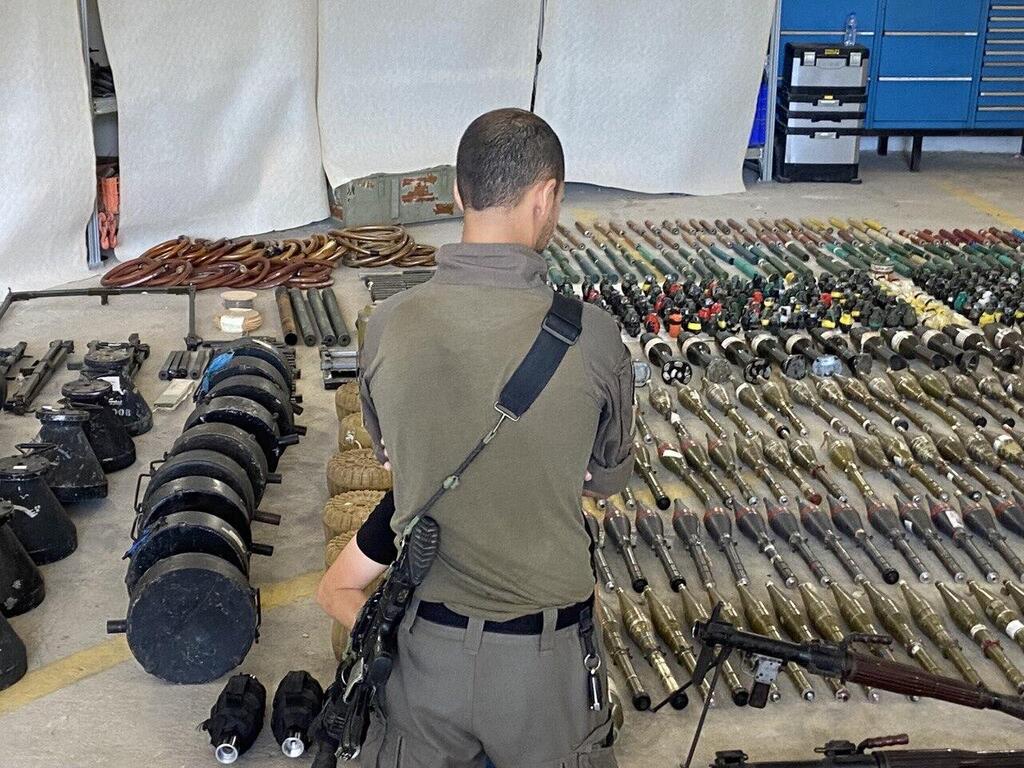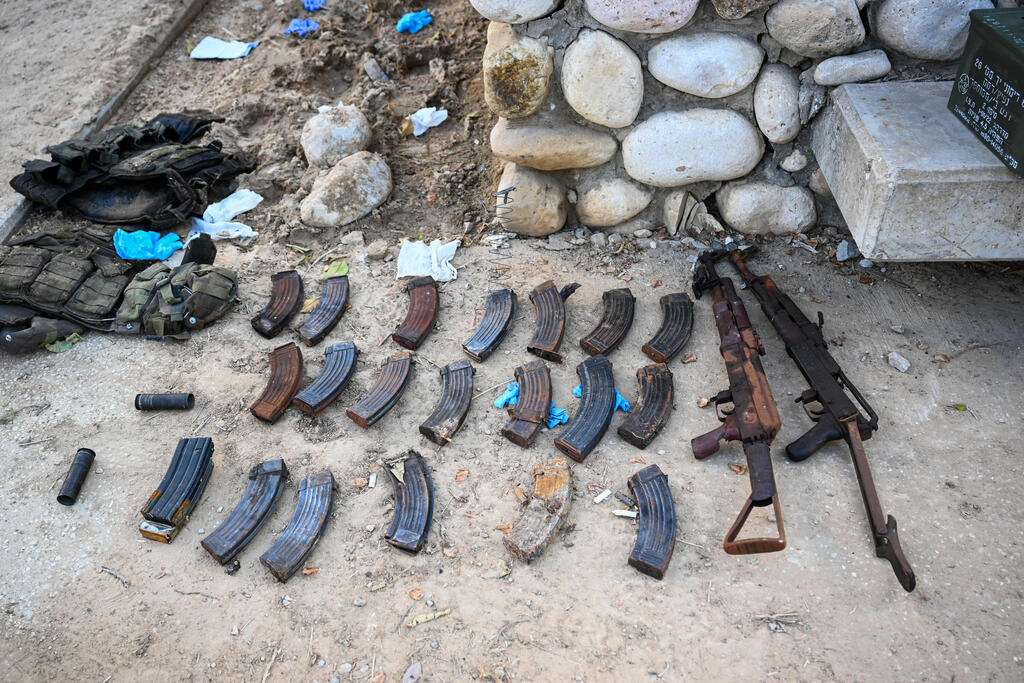Just over a week after a surprise terrorist attack on Israel, documents and maps seized from some of the 1,500 terrorists who infiltrated Israeli territory reveal the extent of their meticulously planned operation, which the terrorist group’s top military minds had been preparing for years.
More stories:
In addition to attacking border kibbutzim, towns and cities like Sderot and Ofakim – where countless civilians have been murdered – Hamas also intended to invade Ashkelon via the sea and even reach the relatively distant city of Kiryat Gat, some 20 miles into Israeli territory, bringing along more than 30 different vehicles.
Israeli Navy thwarts Hamas infiltration into Ashkelon via sea
(Video: IDF Spokesperson's Unit)
The documents reveal that Hamas intended for their occupation and stay in Israeli communities to last about a month, as evident from the quantities of food the invading forces brought with them, including large bags of dry food such as rice and lentils, pita bread, dates, shelf-stable milk and more.
Active police checkpoints are still stationed on major routes near the Gaza border, including Highway 4 toward Ashdod and roads leading to Be'er Sheva, in order to deter terrorists who entered during the conflict's onset and remain at large. Last week, Hamas terrorists were detected near the Sde Teiman camp by Be'er Sheva, the farthest point Gaza terrorists were found in, where they were apprehended by the Duvdevan unit.
The defense establishment is investing immense efforts to determine if some of the terrorists have reached more distant areas as sleeper cells, intending to hide and launch pre-planned attacks, such as at the onset of a potential IDF ground incursion into the Palestinian enclave or toward the end of the conflict.
The massive quantities of weaponry found in Israeli territory also suggest Hamas' plans to combat within Israel for several weeks. The heroic response of forces, many of whom acted on their own initiative, prevented an even more catastrophic outcome. To date, no fewer than 10,000 various weapons have been located in Israel and have been handled by the National Explosive Ordnance Disposal Unit at the Emmanuel Camp in Julis.
The vast amount of weaponry could equip an entire military brigade and included thousands of full magazines; explosive charges of various sizes, some designed to attach to tanks and destroy armored vehicles; RPG missiles of various types originating from Russia and North Korea; thermobaric missiles – which the terrorists fired into living rooms, immediately setting them ablaze; 1,500 AK-47s; 2,000 standard grenades; dozens of Strela shoulder-fired anti-aircraft missiles; numerous night-vision devices and communication equipment; hundreds of Dragunov-type sniper rifles and machine guns; explosive devices modeled after those used by the IDF for breaching walls, fences and doors; trapping devices; hundreds of commando knives; drones equipped to drop explosive devices; thousands of hand grenades and large Egyptian-made mines converted into handheld explosive devices.
In addition, IDF forces were surprised to discover a large number of advanced first-aid kits packed with blood units and medical equipment. The terrorists managed to use only a small fraction of these weapons - designed to kill vast numbers of Israelis.
8 View gallery
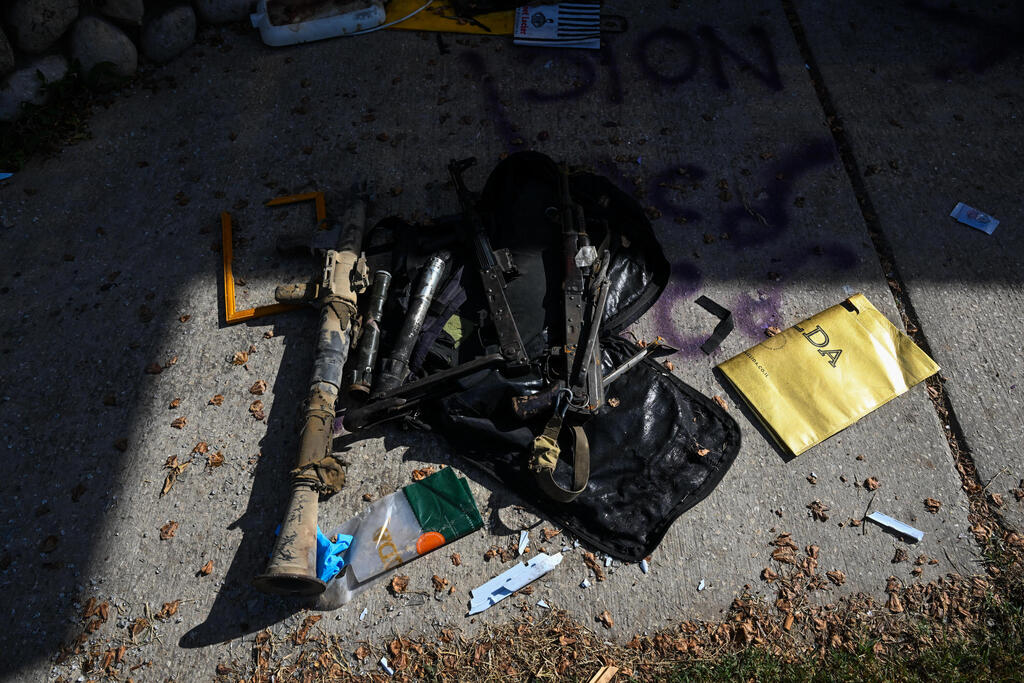

Hamas armaments recovered from a home in Kfar Aza
(Photo: Alexi J. Rosenfeld/Getty Images)
"We saw terrorists we killed moments before they could detonate themselves or in the houses they occupied," recounted the commander of the institute, Lt. Col. G., who fought in Operation Protective Edge as part of the Yahalom unit and participated in the raid on the tunnel where IDF soldier Hadar Goldin was abducted.
G. was familiar with all the captured weapons but was taken aback by the quantity. "They used marking discs, and a significant portion of that weaponry is manufactured in the Gaza Strip, but not to military standards. Approximately 30% of their weapon production is defective, which is why they produce in such volumes," he said.
The IDF is currently studying the captured arms, and some of the retrieved RPG missiles were tested on simulated targets on Sunday.
There's growing concern within military circles about the significant number of tanks and Namer APCs that were critically damaged, even with the Trophy active protection system in place. Hamas has been able to pinpoint the vulnerabilities of these armored vehicles, prompting the army to strategize on strengthening these weak points ahead of any future operations.






